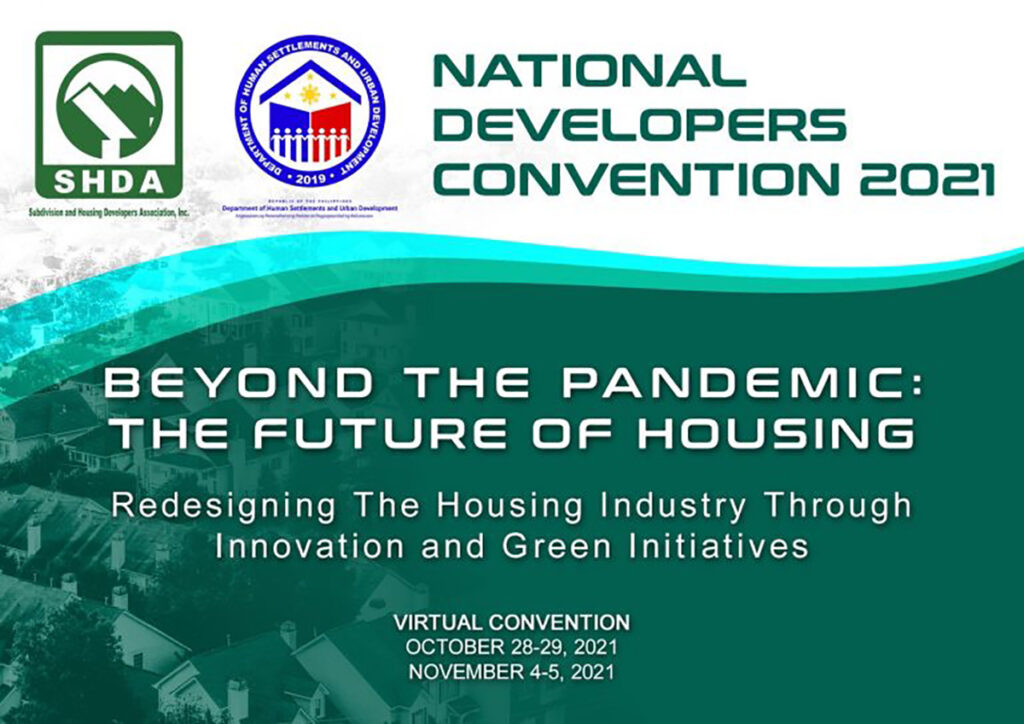What’s the future of housing? I talked to the Subdivision and Housing Developers Association (SHDA) chairman Rosie Tsai-Wang on how to address the challenges besetting the housing industry.
SHDA, in partnership with the Department of Human Settlements and Urban Development (DHSUD), is conducting its National Developers Convention with the theme “Beyond The Pandemic: The Future of Housing.”

The National Developers Convention 2021 is focused on providing an avenue for housing and property developers, the government, and key stakeholders in the housing sector to tackle how they can collaborate in redesigning the housing industry through innovation and green initiatives with the ultimate goal to create smart subdivisions.
Here’s my interview with Tsai-Wang:
Property Report: How can we solve the lack of sustainable and available funds for housing?
Rosie Tsai-Wang: We need to increase budgetary allocation for the housing sector, review the mandates of government housing financial institutions and increase private sector participation in housing initiatives and activities.
Property Report: How do we improve access to land for housing and settlements?
Tsai-Wang: We need to identify and do an inventory of available and idle lands which can be utilized for housing. There are many challenges including burgeoning housing need and backlog and proliferation of informal settlers.
Property Report: How do we address rising interest rates for socialized and public housing?
Tsai-Wang: We need to review and determine interest rates for housing, reflective of affordability and income of the general population because higher interest rates discourages borrowing for housing and hampers affordable housing financing.
Property Report: How do we address lack of policies and programs for sustainable housing and well planned communities and green infrastructure developments?
Tsai-Wang: We need to encourage the inclusion of Green, Resilient and Innovative Housing in government policies and programs. We also need to provide incentives for Green, Resilient and Innovative initiatives in housing activities.
Property Report: How come in the early decade housing is free or well subsidized by the government?

Tsai-Wang: In the late 1950s ,1960s and early 70s, the government, through People’s Home Site and Housing Corp. and later the Government Service and Insurance System (GSIS), was able to implement new settlement projects such as the Housing Projects known today as Projects 2, 3, 4, 7, 8 and similar developments.
The GSIS, as provided under their Charter, has devoted investible funds for housing activities to finance said projects mainly to address the housing requirements of their government workers.
During those times, the Philippine population was only around 26.3 million compared to some 111 million in 2021.
There was a ready market for these housing units which were made available at low interest rates to the GSIS members. More importantly, the availability and access to affordable land for housing development contributed to the success of said housing intervention.
Today, the country’s population has ballooned to 111 million with a growth rate of 1.34 percent. Urbanization has likewise risen to 47.4 percent and large tracts of land for settlements in urban areas and peripherals are now unavailable or are too expensive for mass housing.
Property Report: What can we do to have similar initiatives?
Tsai-Wang: What the government does now is link with the private sector, specifically those with expertise in vertical mass housing construction, and the local government units that may have available lands for high density medium-rise housing, to implement mass housing programs to address the demands for low-cost housing for urban families and settlers.
New town developments incorporating mixed-use and integrated area development have likewise been prevalent today, initiated mostly by the private sector who have done extensive land banking to cater to the demands of the families who have access to the formal housing financing schemes from both the government and private financial institutions.
